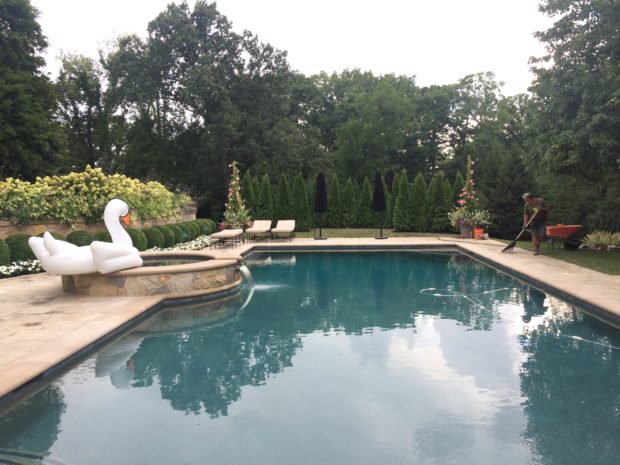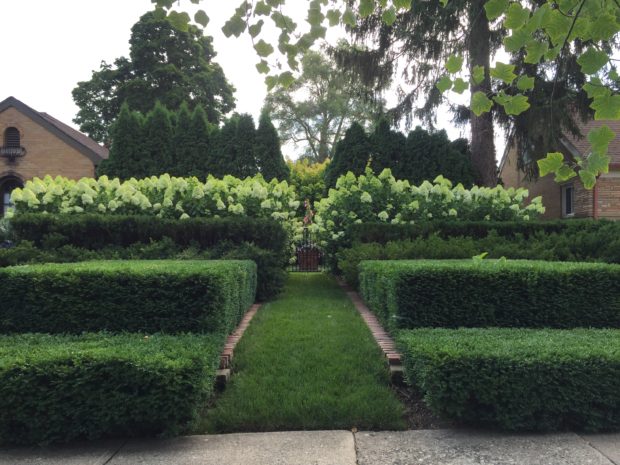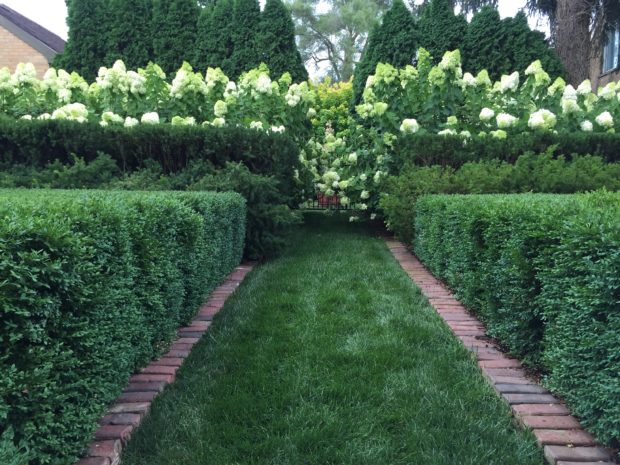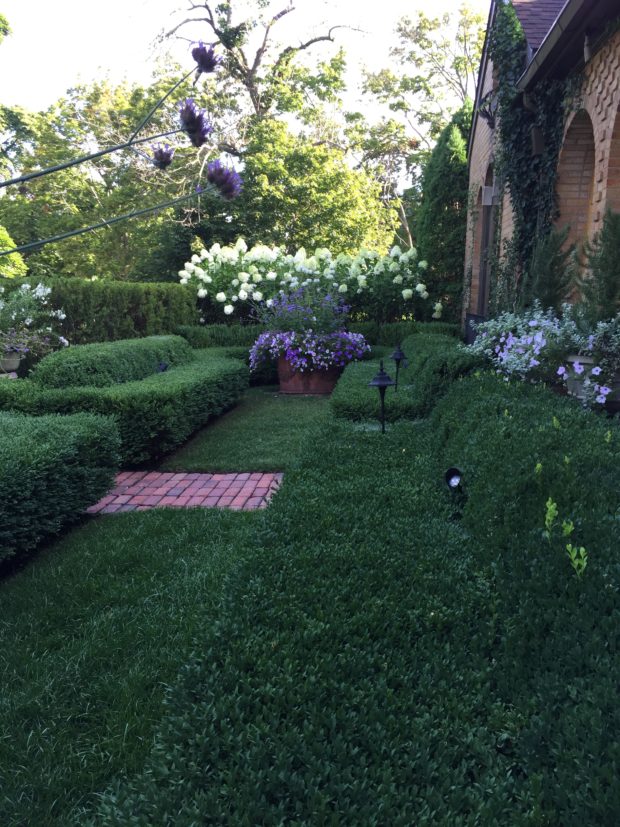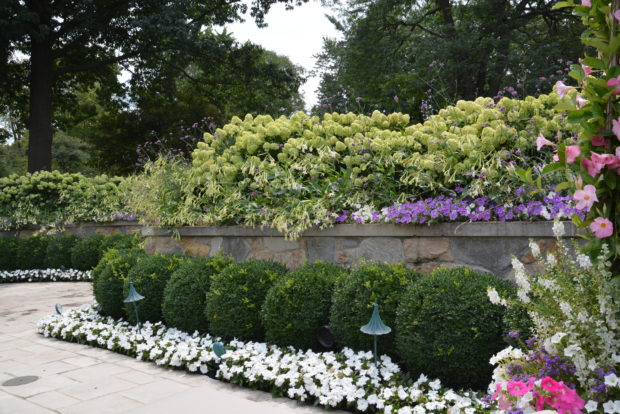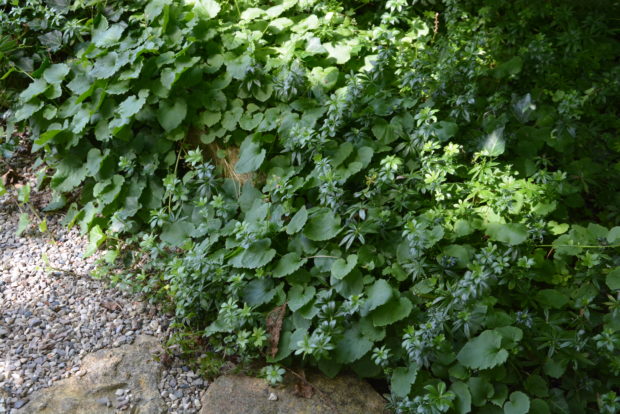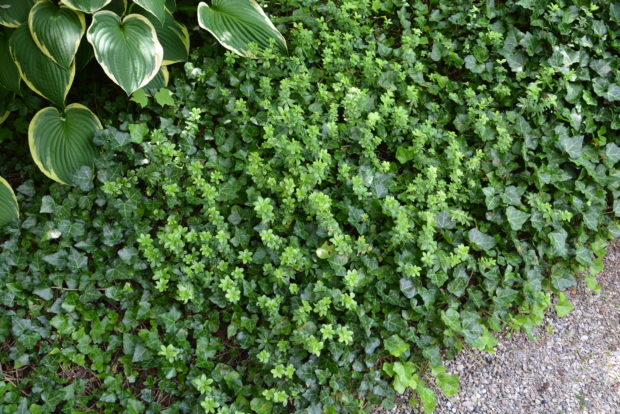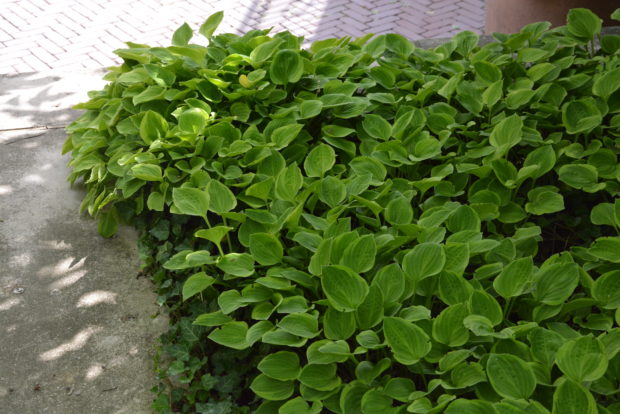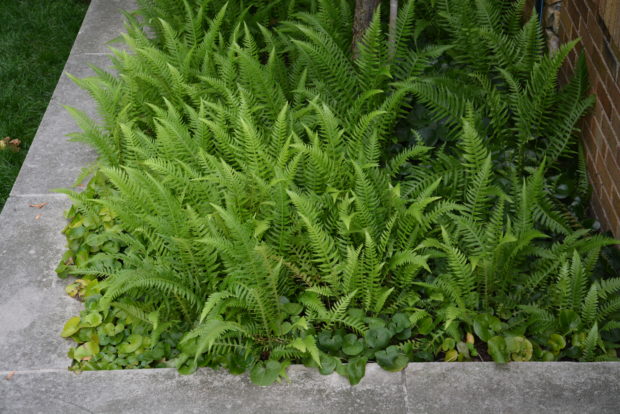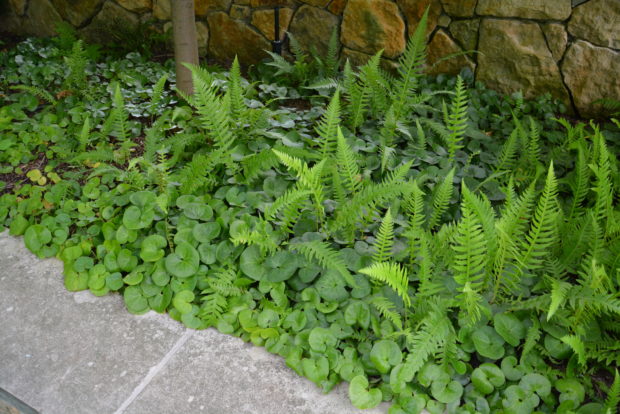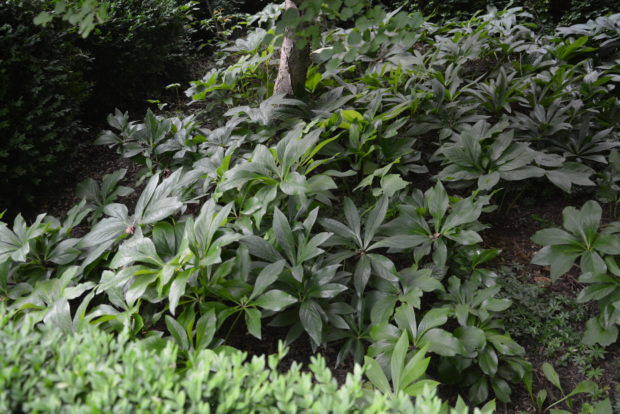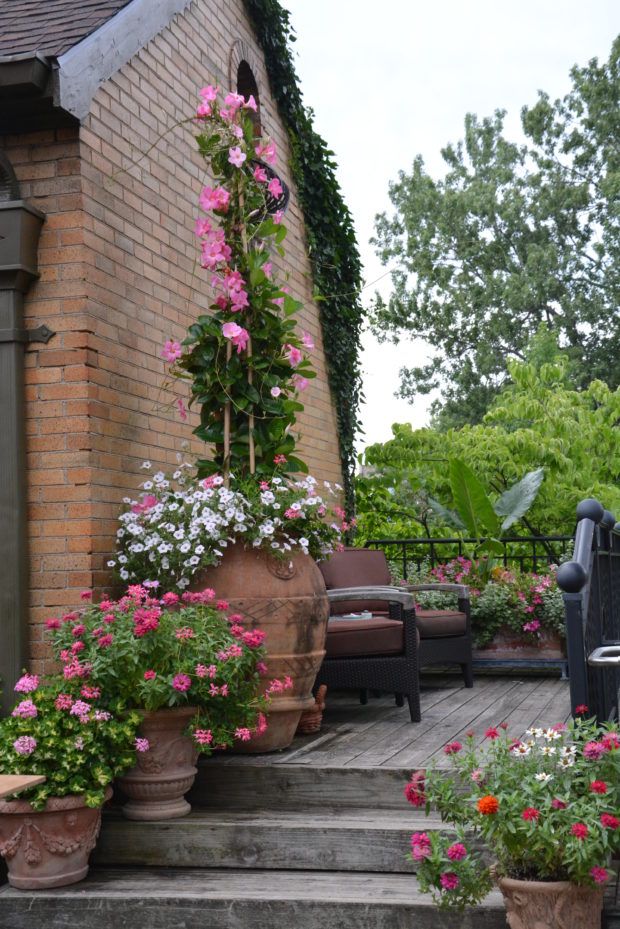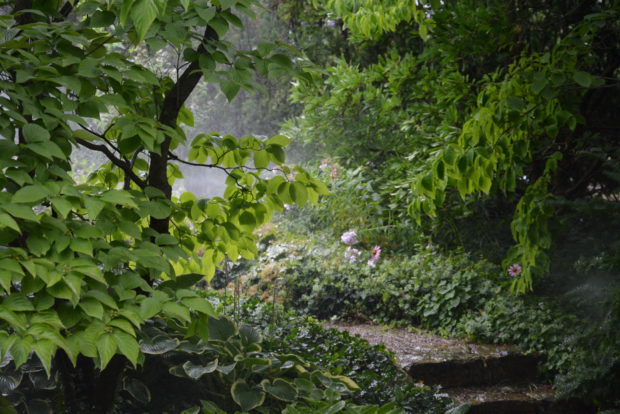 I don’t recall the topic under discussion, but at one point Buck said to me, “Well you know, a rising tide lifts all boats”. That got my attention, as I had never head this expression before. From Wikipedia, ” The aphorism “a rising tide lifts all boats” is associated with the idea that improvements in the general economy will benefit all participants in that economy.” Though this saying is usually associated with economic theory, I do not see why it could not be applied to a variety of other topics – like the landscape design process. It seems almost too obvious to say, but I will say it anyway. To my mind, the most striking change in perception and knowledge about the landscape over the past 20 or more years has been fueled by the availability of information – both of the written and visual sort. Thirty years ago, even the most well travelled clients were not necessarily aware of the history or current practice of landscape design. Or what materials and plants were available. Their focus was on their lives. They had me, as my focus was on their landscape. Of course there is no substitute for personal experience, but it requires almost no effort to see pictures and read about landscapes both historic and contemporary, in other parts of our own country, and in other countries. Information and pictures are readily available. It is just as easy to research materials and ornament for the landscape. We completed the landscape pictured above early in 2013. We still work there, doing the seasonal plantings. A few months ago she gave me a photograph she had seen in a magazine of a landscape feature predicated on a pair of parallel hedges of arborvitae, and asked how I felt about a similar feature at the far end of her pool. I thought it was a great idea. We left the space behind the chaises open, in case there were ever a reason to tent the space for a party. After living with the landscape for 3 years, my client was interested in a more finished gesture, and she had a way to explain to me how she would like to see it finished.
I don’t recall the topic under discussion, but at one point Buck said to me, “Well you know, a rising tide lifts all boats”. That got my attention, as I had never head this expression before. From Wikipedia, ” The aphorism “a rising tide lifts all boats” is associated with the idea that improvements in the general economy will benefit all participants in that economy.” Though this saying is usually associated with economic theory, I do not see why it could not be applied to a variety of other topics – like the landscape design process. It seems almost too obvious to say, but I will say it anyway. To my mind, the most striking change in perception and knowledge about the landscape over the past 20 or more years has been fueled by the availability of information – both of the written and visual sort. Thirty years ago, even the most well travelled clients were not necessarily aware of the history or current practice of landscape design. Or what materials and plants were available. Their focus was on their lives. They had me, as my focus was on their landscape. Of course there is no substitute for personal experience, but it requires almost no effort to see pictures and read about landscapes both historic and contemporary, in other parts of our own country, and in other countries. Information and pictures are readily available. It is just as easy to research materials and ornament for the landscape. We completed the landscape pictured above early in 2013. We still work there, doing the seasonal plantings. A few months ago she gave me a photograph she had seen in a magazine of a landscape feature predicated on a pair of parallel hedges of arborvitae, and asked how I felt about a similar feature at the far end of her pool. I thought it was a great idea. We left the space behind the chaises open, in case there were ever a reason to tent the space for a party. After living with the landscape for 3 years, my client was interested in a more finished gesture, and she had a way to explain to me how she would like to see it finished.
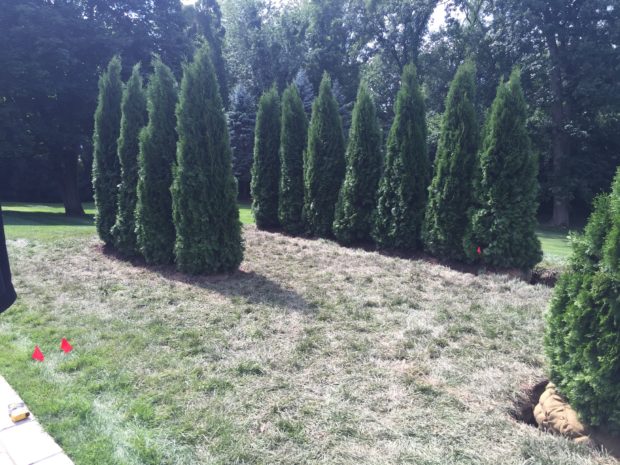 Is it unusual for a client to suggest a change or addition to a landscape? It may have been so years ago, but not now. A client who is interested in a shade tree, an arbor, a bird feeder, a swimming pool, terrace furniture, a vegetable garden, a fountain, a hedge, a certain architectural style or a perennial garden has most likely done some research on the topic. A picture or article that explains or illustrates what appeals to them gets their idea across clearly. No one installs a landscape hoping it will satisfy. Everyone wants to feel some measure of confidence that they will like the results of a landscape project. I might do research of my own for images that illustrate a landscape concept I am trying to explain to a client.
Is it unusual for a client to suggest a change or addition to a landscape? It may have been so years ago, but not now. A client who is interested in a shade tree, an arbor, a bird feeder, a swimming pool, terrace furniture, a vegetable garden, a fountain, a hedge, a certain architectural style or a perennial garden has most likely done some research on the topic. A picture or article that explains or illustrates what appeals to them gets their idea across clearly. No one installs a landscape hoping it will satisfy. Everyone wants to feel some measure of confidence that they will like the results of a landscape project. I might do research of my own for images that illustrate a landscape concept I am trying to explain to a client.
 The 2 parallel hedges are set 7 feet apart. The opening in the front hedge is 10 feet wide. After seeing this, my client decided she wanted the opening a little smaller. We will add two more Emerald Green arborvitae in the front row.
The 2 parallel hedges are set 7 feet apart. The opening in the front hedge is 10 feet wide. After seeing this, my client decided she wanted the opening a little smaller. We will add two more Emerald Green arborvitae in the front row.
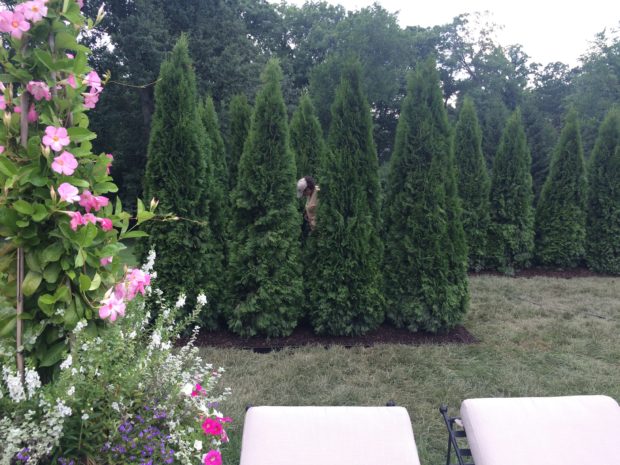 The planting of these 23 arborvitae will provide structure to a space. It will take several years for the plants to grow together, and act like walls. I am quite sure we will trim the tops parallel to the horizon. What comes next will be determined when this part is finished. Whether there is a large planter, or benches or a fountain-I have no idea, nor do I need to know right now. For sure there are no end of options for consideration. The rising tide of available information means that any project can be lifted up. More personal. better.
The planting of these 23 arborvitae will provide structure to a space. It will take several years for the plants to grow together, and act like walls. I am quite sure we will trim the tops parallel to the horizon. What comes next will be determined when this part is finished. Whether there is a large planter, or benches or a fountain-I have no idea, nor do I need to know right now. For sure there are no end of options for consideration. The rising tide of available information means that any project can be lifted up. More personal. better.
 A recent landscape consultation involved a discussion of a fountain which would be a focal point in the landscape. My client wanted me to tell her what options were available. I could easily provide scores of fountain options that would be properly proportioned to the space, and amiable to the architecture. But having only met her once, I might not be able to find that one fountain that would greatly appeal to her. I told her she needed to put her boat in the water. I gave her a list of possible search phrases, to which she could add her own. Once she could show me pictures of fountains, or fountain shapes or styles that appealed to her, I would be better able to help her select one.
A recent landscape consultation involved a discussion of a fountain which would be a focal point in the landscape. My client wanted me to tell her what options were available. I could easily provide scores of fountain options that would be properly proportioned to the space, and amiable to the architecture. But having only met her once, I might not be able to find that one fountain that would greatly appeal to her. I told her she needed to put her boat in the water. I gave her a list of possible search phrases, to which she could add her own. Once she could show me pictures of fountains, or fountain shapes or styles that appealed to her, I would be better able to help her select one.
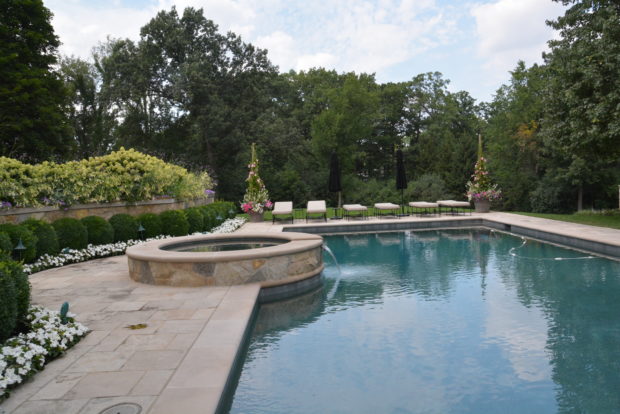 For those clients who have looked at too many pictures, or read too many articles, a designer can be useful as an editor. Too many choices can be paralyzing, and just as bad a situation as having no choice. I like to advise, to a point. Any client who is instrumental in making decisions about their landscape takes ownership of it more readily. This is why I think designers (myself included) have such a hard time making decisions about their own landscapes. Too much exposure to too many options can bring a decision making process to a standstill. If you only have room for one tree, and there are 20 that could be beautiful, how do you make a choice? What do you need most from the tree? shade? flowers and fruit? screening? That should narrow your list of 20. Most places have state parks, arboretums, botanic gardens and public gardens of one sort or another where anyone can see trees in person. Or you could look at each tree on google images, and compare. On the Missouri Botanic Garden website, go to the Plant finder
For those clients who have looked at too many pictures, or read too many articles, a designer can be useful as an editor. Too many choices can be paralyzing, and just as bad a situation as having no choice. I like to advise, to a point. Any client who is instrumental in making decisions about their landscape takes ownership of it more readily. This is why I think designers (myself included) have such a hard time making decisions about their own landscapes. Too much exposure to too many options can bring a decision making process to a standstill. If you only have room for one tree, and there are 20 that could be beautiful, how do you make a choice? What do you need most from the tree? shade? flowers and fruit? screening? That should narrow your list of 20. Most places have state parks, arboretums, botanic gardens and public gardens of one sort or another where anyone can see trees in person. Or you could look at each tree on google images, and compare. On the Missouri Botanic Garden website, go to the Plant finder
